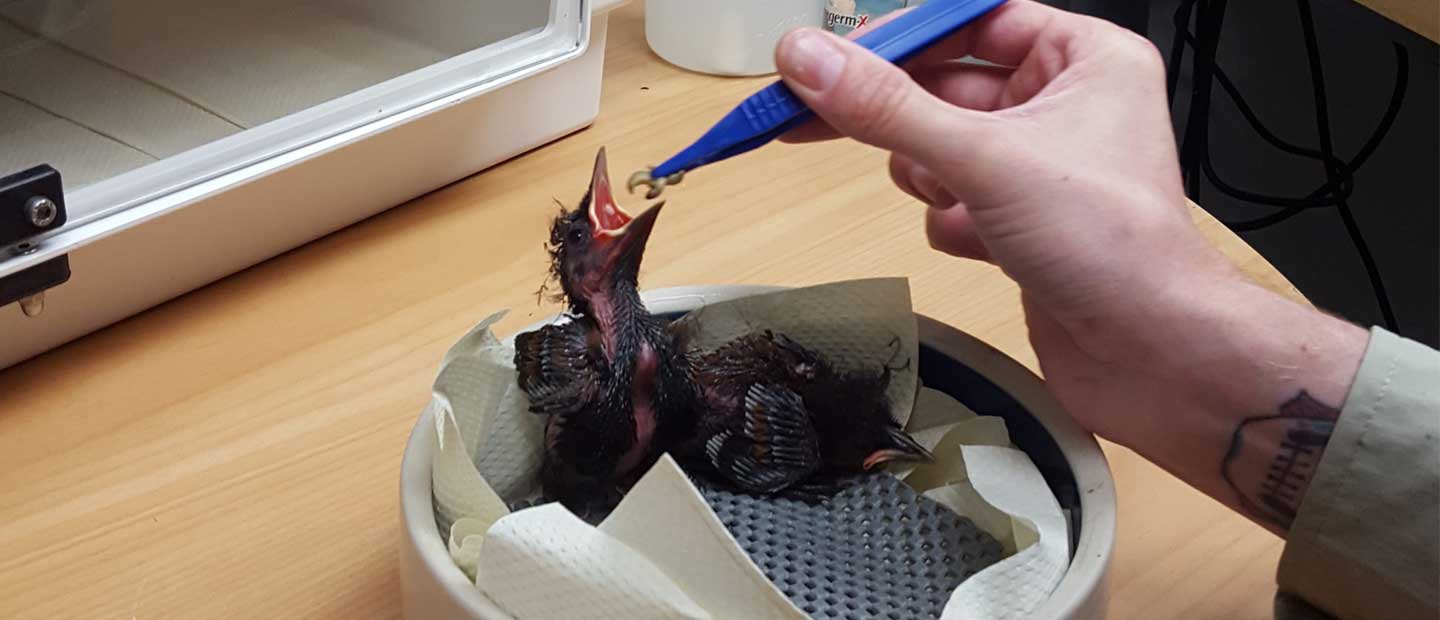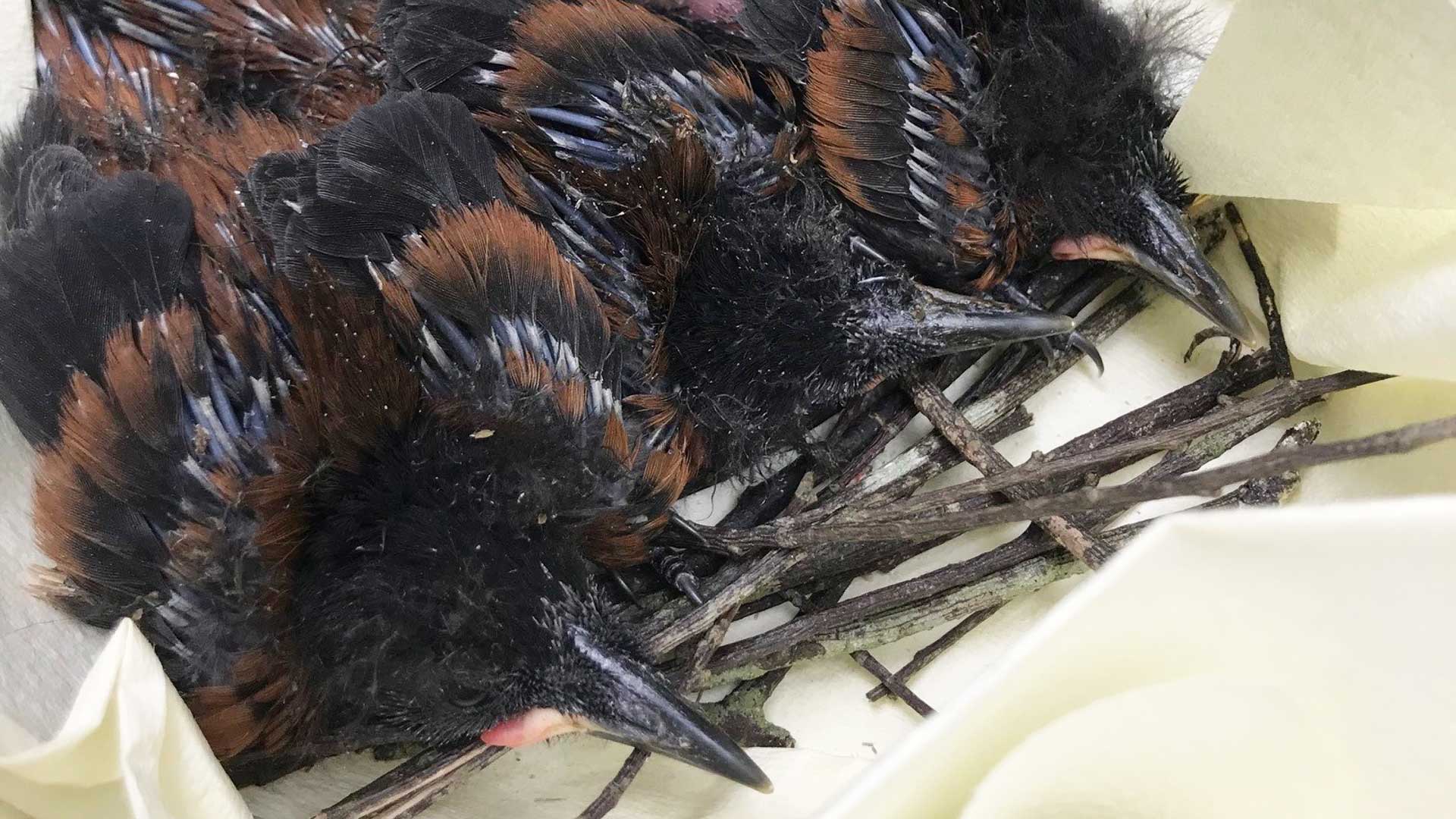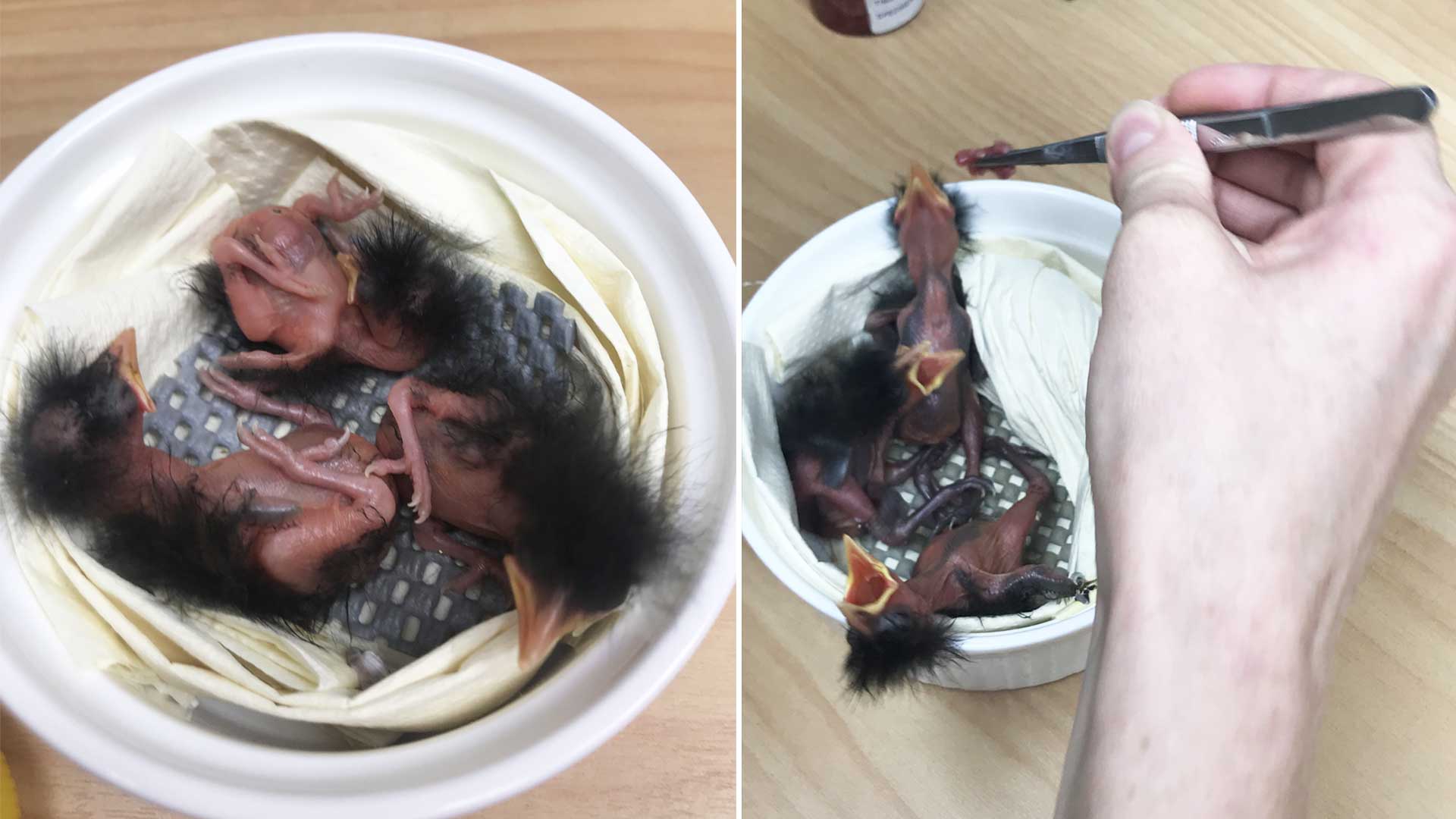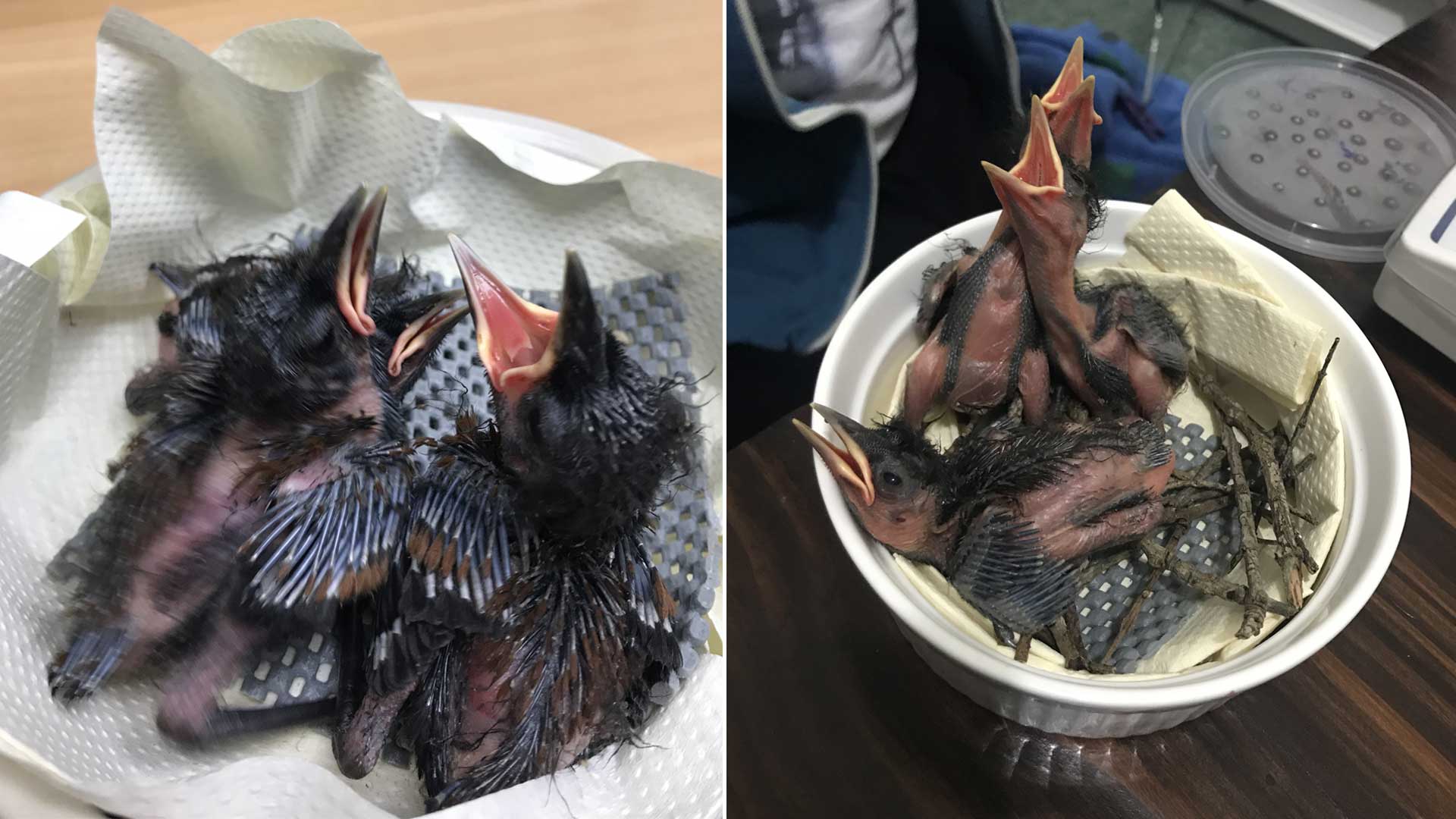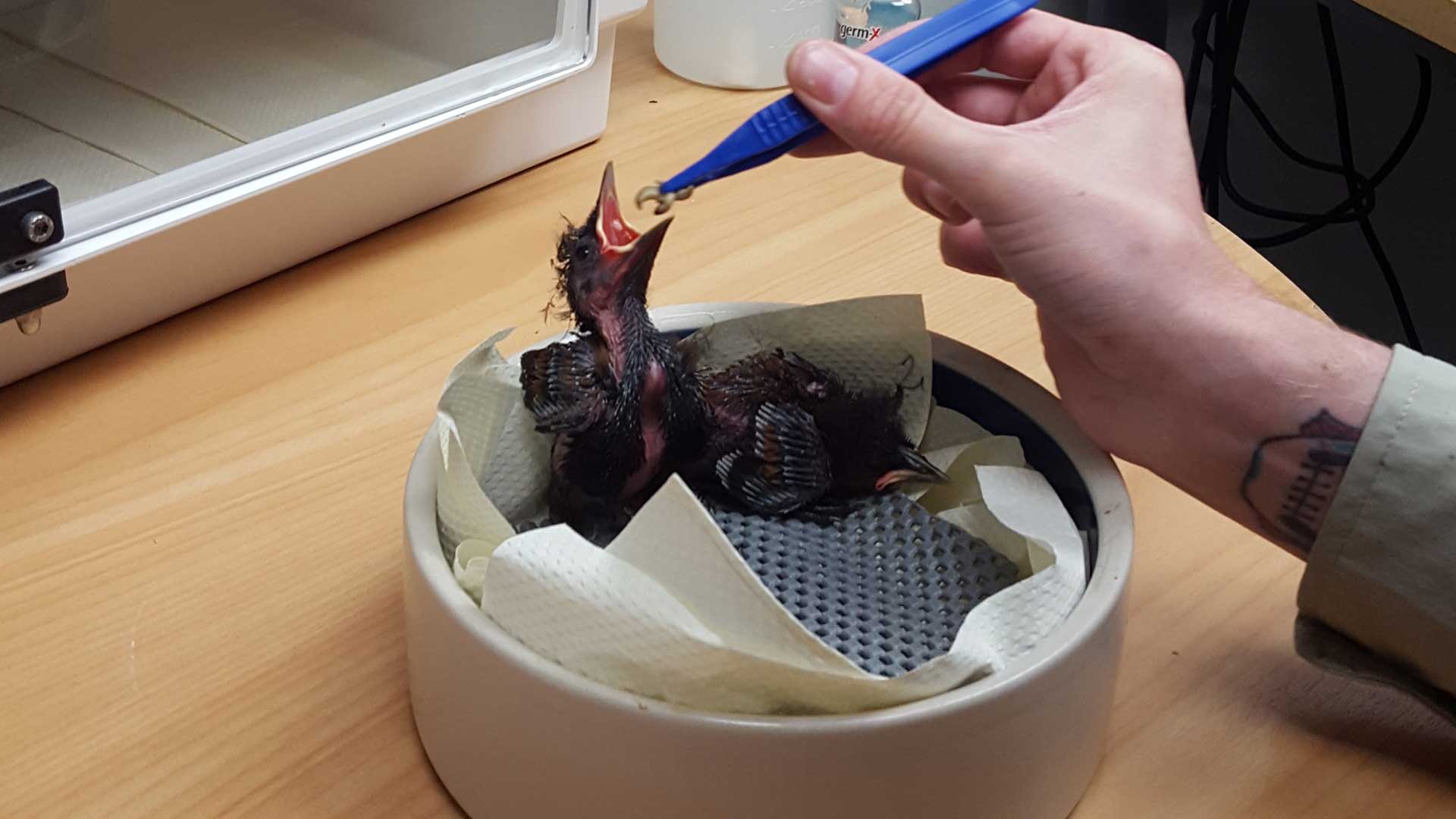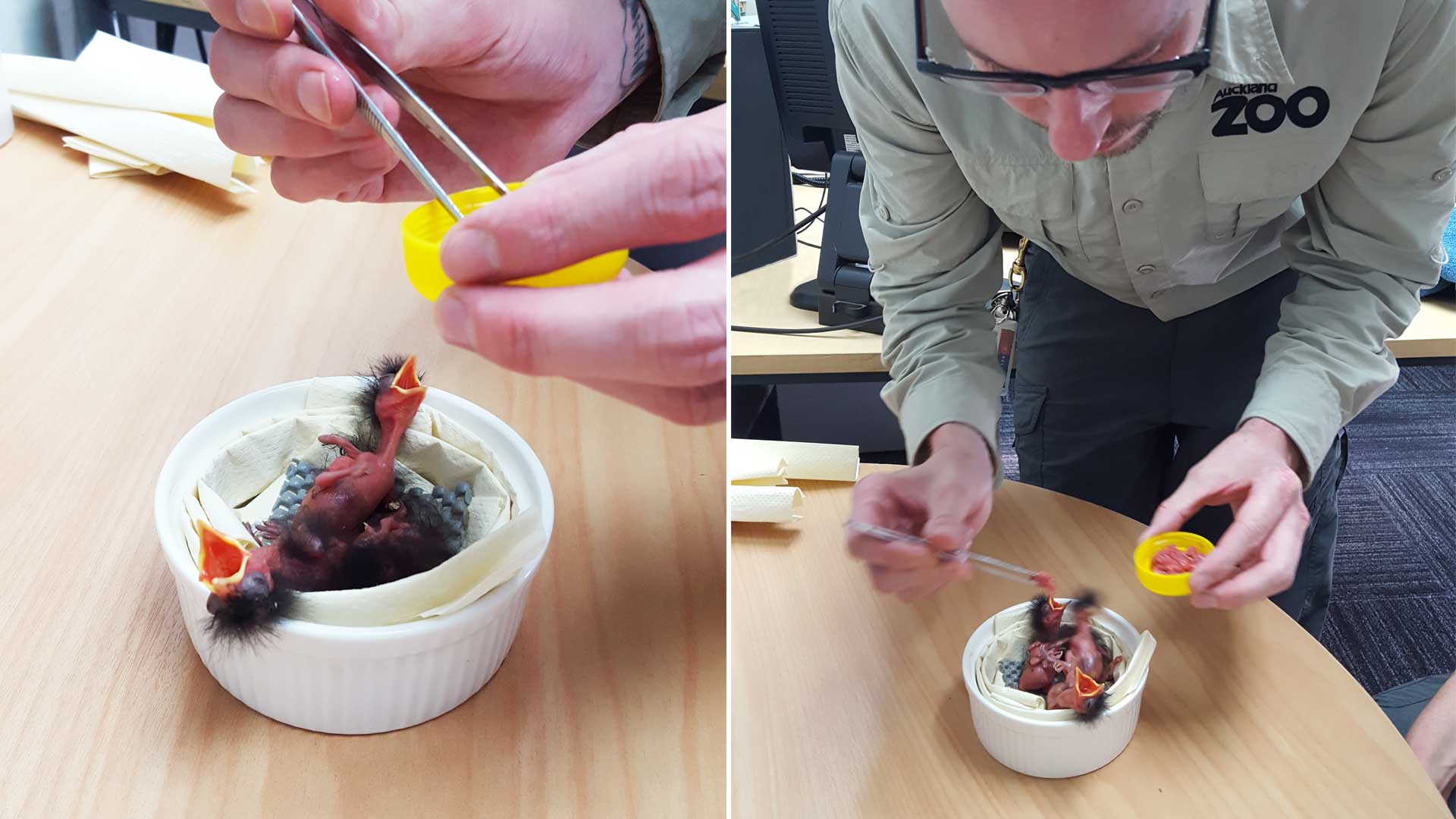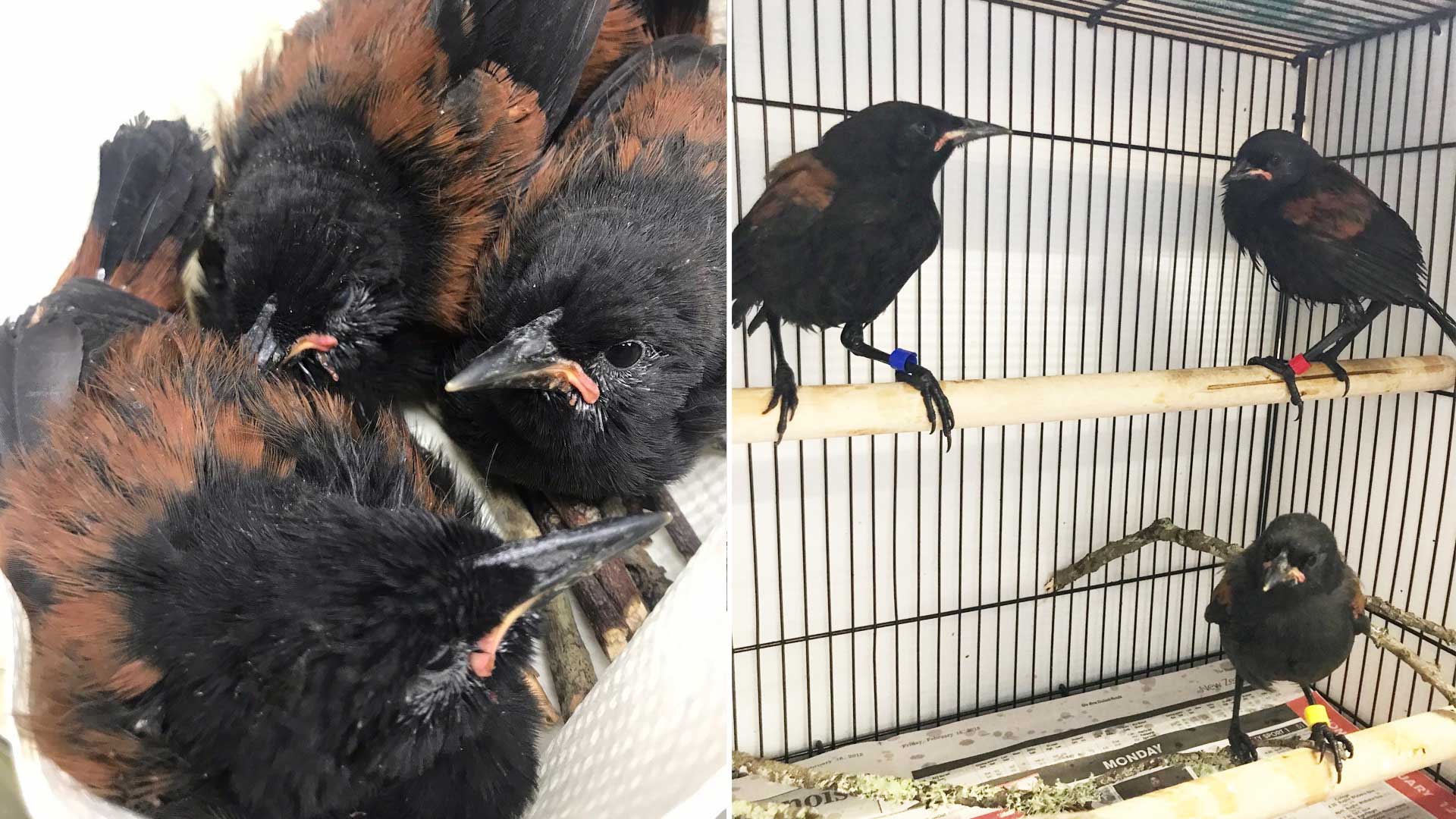The chicks hatched successfully after 18 days of incubation and received just fluids for the first few hours while they absorb the rest of the yolk hidden inside them. Then the real hard work begins with chicks being fed hourly from 6am in the morning until 11pm at night! On day three this schedule was reduced to two-hourly feeds and once they reached day twenty-two, the frequency of their feeds dropped again to every three hours.
Throughout the rearing, the tīeke chicks were fed a delicious diet of finely chopped rat-pups and juicy papaya - fed by tweezers into their gaping mouths. This was supplemented with vitamins, minerals and probiotics to maximize their health and immunity. Towards the middle of the rearing period we introduced small insects including crickets, waxmoths and their larvae and mealworms to the diet. It was only at 30 days of age that the chicks began to find their feet, fledge from their artificial nest and start feeding on their own.
As Auckland Zoo's team leader of birds Carl says "Tīeke are so charismatic! It’s been fantastic to be able to hand raise several of these unique birds. The early morning and late nights of caring for them is always worth the hours of time it takes to do it. It’s a real labour of love and can take around 50 days from start to finish. It’s a very rewarding process to go through all the different stages of their development with them; from incubation, hatching, growing and fledging, to where they are then self-sufficient and able to look after themselves." To our knowledge, this is the first time tīeke have ever been hand-reared!


